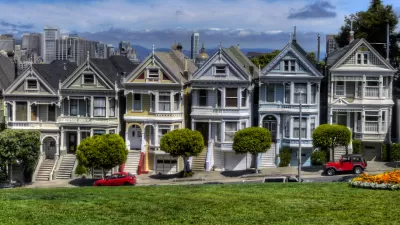Despite the intentions of the nation's fair housing laws, neighborhoods in the United States continue to segregate by race.

William H. Frey examines contemporary neighborhood residential segregation, using Census Bureau American Community Survey data from the 2015-2019.
According to Frey, the data show that "despite the fact that people of color account for the vast majority of recent U.S. population growth, white residents almost everywhere— including those in the nation’s most diverse metropolitan areas—continue to reside in mostly white neighborhoods."
And while neighborhood segregation has declined since the 1960s ("albeit modestly," writes Frey), "substantial levels of neighborhood segregation persist for Black residents and—to a sizable, though lesser extent—for Latino or Hispanic and Asian Americans."
Put another way: "Just as white neighborhoods continue to remain 'whiter' than their surrounding metropolitan areas, it’s also the case that neighborhoods where the average Black, Latino or Hispanic, and Asian American populations reside continue to include overrepresentations of those groups."
The source article includes a lot more data, analysis, and infographics.
FULL STORY: Neighborhood segregation persists for Black, Latino or Hispanic, and Asian Americans

Alabama: Trump Terminates Settlements for Black Communities Harmed By Raw Sewage
Trump deemed the landmark civil rights agreement “illegal DEI and environmental justice policy.”

Study: Maui’s Plan to Convert Vacation Rentals to Long-Term Housing Could Cause Nearly $1 Billion Economic Loss
The plan would reduce visitor accommodation by 25% resulting in 1,900 jobs lost.

Why Should We Subsidize Public Transportation?
Many public transit agencies face financial stress due to rising costs, declining fare revenue, and declining subsidies. Transit advocates must provide a strong business case for increasing public transit funding.

Paris Bike Boom Leads to Steep Drop in Air Pollution
The French city’s air quality has improved dramatically in the past 20 years, coinciding with a growth in cycling.

Why Housing Costs More to Build in California Than in Texas
Hard costs like labor and materials combined with ‘soft’ costs such as permitting make building in the San Francisco Bay Area almost three times as costly as in Texas cities.

San Diego County Sees a Rise in Urban Coyotes
San Diego County experiences a rise in urban coyotes, as sightings become prevalent throughout its urban neighbourhoods and surrounding areas.
Urban Design for Planners 1: Software Tools
This six-course series explores essential urban design concepts using open source software and equips planners with the tools they need to participate fully in the urban design process.
Planning for Universal Design
Learn the tools for implementing Universal Design in planning regulations.
Smith Gee Studio
Alamo Area Metropolitan Planning Organization
City of Santa Clarita
Institute for Housing and Urban Development Studies (IHS)
City of Grandview
Harvard GSD Executive Education
Toledo-Lucas County Plan Commissions
Salt Lake City
NYU Wagner Graduate School of Public Service





























